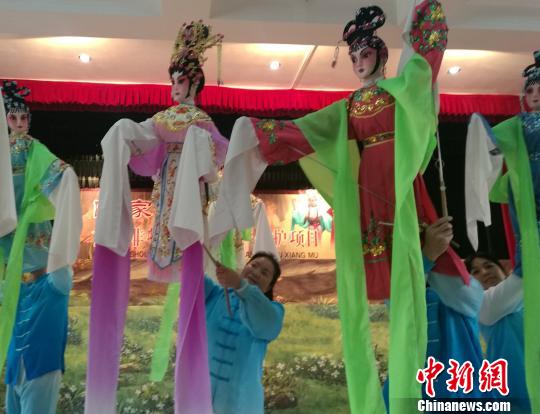羅一|纽约,2020,“无家可归”纪
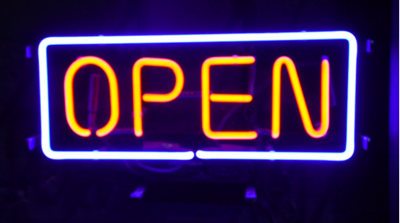
孤独的人观看孤独的人
Lonely people watch lonely people
“人们冒着冬夜之雨,甚至不夸张地说冒着生命危险前来观摩,孤独的人观看孤独的人,游吟者在游吟者画像前纵声歌舞。”12月初,在纽约暗流画廊并不“豪华”的展厅里,羅一个展“无家可归”系列画作被放置在地板上,仿佛天桥下那些随意躺卧在路边的流浪者,静等着观众的到来。
"People braved the winter rain and literally risked their lives to come, lonely people watched lonely people, a troubadour sang and danced in front of paintings of troubadours.”At the beginning of December 2020, in the not-so-luxurious room of Undercurrent Gallery in New York, Loy Luochr(39)s"homeless" series of paintings were laid out on the floor, like homeless people lying on the roadside under an overpass, waiting for the audience to arrive.
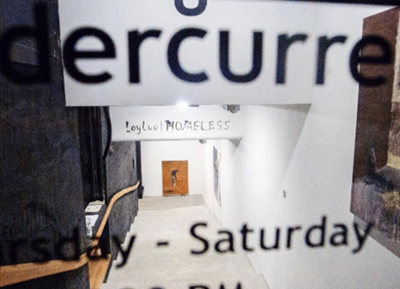
暗流画廊前廊 Undercurrent Gallery Front porch
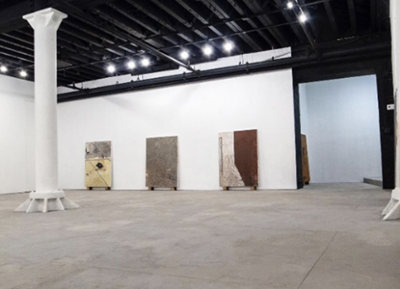
暗流画廊展厅 Undercurrent Gallery showroom
2020年1月,一个赴美旅行转换心情的临时决定成为羅一一段特殊经历的开始。从纽约肯尼迪机场下飞机后,羅一租了一辆汽车,驶向东岸几座城市,开启了参观画廊、博物馆的旅程。原本她打算一路游到西海岸,但随之传来国内疫情的消息,使她以一叶知秋之心境预见世界之大不安,于是逃到到纽约以北的山区,寄居在美国家庭的House里惶恐忧惧半月有余。
In January 2020, Loy Luo made a decision to temporarily travel to the United States, seeking a change of scenery. This was the beginning of a unique experience for the artist. After landing at New Yorkchr(39)s Kennedy Airport, she rented a car and drove to several cities on the east coast, where she began her avid tour of galleries and museums. Originally, Loy planned to drive all the way to the west coast, but then came the news of the pandemic. Foreseeing the coming of an increasingly anxious world, she escaped to the mountains not far north of New York City, where she“sheltered” in the homes of several American families for a couple of weeks, feeling terrified.
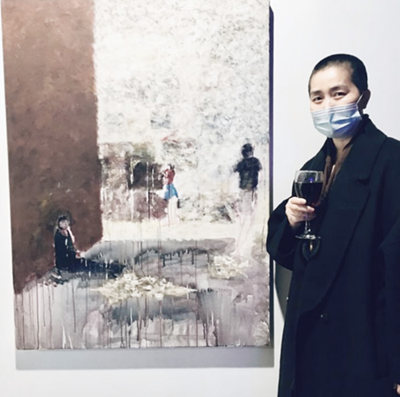
开幕现场,戴口罩的羅一Loy Luo wearing a mask at the opening
2月下旬,尽管恐惧,羅一还是带着对艺术交流的渴望回到纽约城。各种尝试和思索后,她开始实施百人肖像行为计划,即在疫情恐慌的纽约街头给各种戴面具和不戴面具的人画素描肖像。7月15日,名为《另一个我》的百人肖像行为展在纽约白盒子艺术中心开幕,展期延续了两个月。在这期间,羅一开始了《无家可归》展的筹备与创作。
In late February, in spite of her worries, Loy Luo returned to New York City with a desire for artistic exchange. After a lot of trial and thought, she embarked on the 100 Portraits Project, a project to sketch people who wore or didn’t wear a mask on the streets of New York in the midst of the coronavirus outbreak. On July 15,"The Other I," a performance exhibition of 100 portraits, opened at the White Box Art Center in New York for two months. During this period, Loy Luo started the preparation and creation of her next project - an expression of the concept of“homeless”.
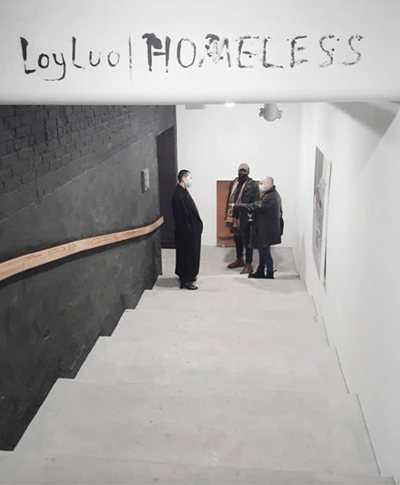
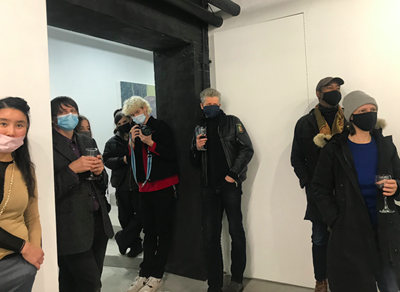
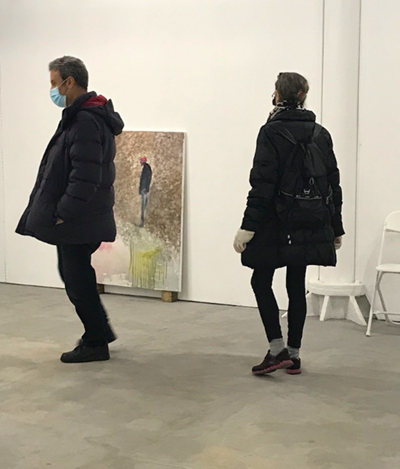
《无家可归》展览现场 "Homeless" exhibition
羅一开始无家可归系列绘画的创作同时以疫情中无家可归者身份实施无家可归之行为,进行到第四个月时,纽约暗流画廊的合伙人通过了《无家可归》的个展方案,并列入画廊12月展览计划。暗流画廊的撰稿人阿德里亚娜·弗隆认为,随着纽约这座城市所进行的无情的变革,它的居民在脆弱的微散居住状态中疲于生存。那些居住在公共空间和私人空间裂隙中的人,表现出了一种不确定性,往好了说,这种不确定性是对“共同选择”的挑战,往坏了说,是政治失败的证明。但羅一从个人经验的角度认为,艺术家是天生的流浪者,他们也有各种心理问题,他们对自己所处时代的问题比普通人更敏感。
Luo began creating a series of homeless paintings while illegally living in her studio as a homeless person during the time of COVID-19. In the fourth month, the partners of New Yorkchr(39)s Undercurrent Gallery approved the solo exhibition plan of"Homeless" and included it in the gallerychr(39)s exhibition plan for December 2020.Undercurrent Gallery contributor Adriana Furlong wrote:As the city performs relentless alterations, its inhabitants strain to survive inside fragile micro-diasporas. Those who inhabit the chasm between public and private space embody an indeterminacy that, at best, defies co-option and, at worst, is testament to political failure. However, Luo believes from the perspective of personal experience that artists are born wanderers with their own psychological struggles, and because of that are more sensitive to the problems of their time than ordinary people.
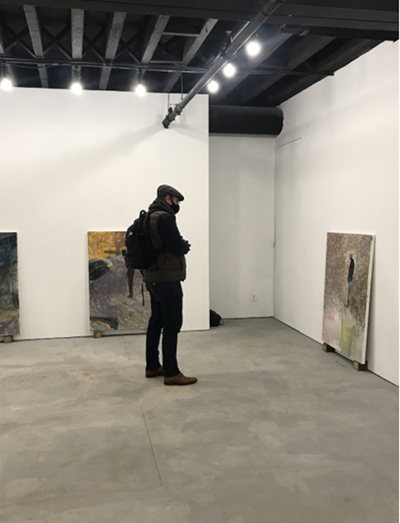
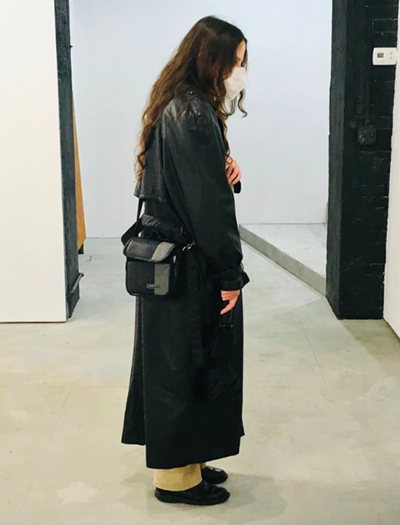
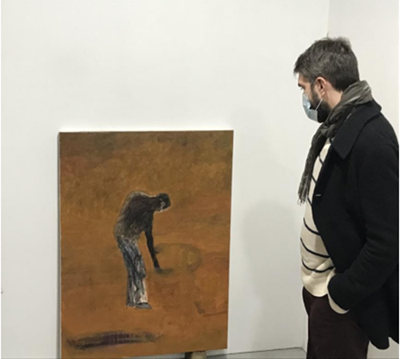
孤独看客 Lonely looking
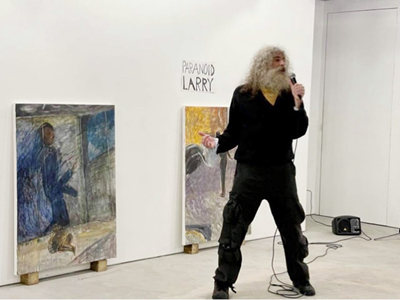
在《无家可归》者中纵情歌舞的“游吟”歌手 A"minstrel" singer who sings and dances in The Homeless
显然,在“无家可归”作品中,“无脸”特征吻合了大时代下身份缺失带来的迷惑感受,也双关着失去尊严的隐喻。但当羅一“目睹’卡西莫多(Quasimodo)’驼背的身体散发出雕塑般的庄严、‘游吟诗人(Troubadour)’孤立于历史废墟上的身影令人唏嘘时,这些世俗社会定义的无用者的存在让我关联到提倡无用之用的中国古典哲学。”是的,这些“无家可归”者作品中的那种支离混沌感并不体现绝望的孤独,而是羅一式孤独:带着一点坚韧的孤独,还带着一点面对这个动荡不安的世界时,永远保持乐观的也许微弱却温暖的孤独。
Obviously, Loy Luochr(39)s faceless figures suggest a loss of both identity and dignity in the modern world, but when the artist saw a kind of sculptural majesty in“Quasimodo”’s hunchbacked body, and thechr(39)Troubadourchr(39) standing lonely among the ruins of history, Loy was reminded of the meaningfulness of those whose existence is labeled as otiosity, which is discussed in classical Chinese philosophy. The intention of the works is not so much to emphasize the despair of those who are homeless. Instead it is loneliness tempered with a bit of resilience; not overly strong, perhaps, but somehow always warm and optimistic in the face of this turbulent world.

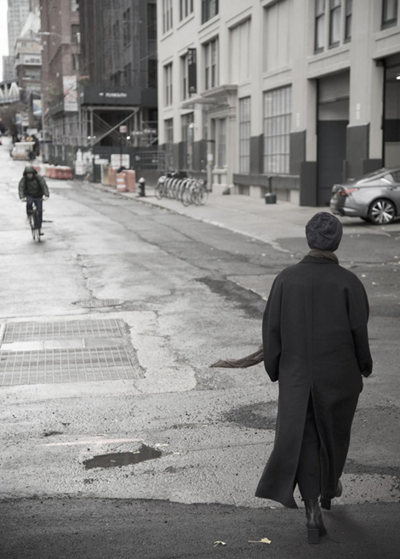
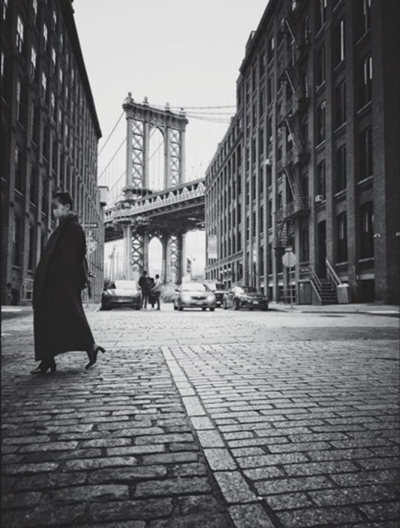
羅一在纽约街头 Loy Luo is on the streets of New York
艺术背面:死亡、存在、表达
The back of the art: death, existence, expression
在异国亲历疫情让羅一对死亡和存在有了与以往不同的认知。通过对疫情期间人性的观察她感受到,真的直逼死境容易使人突然间精神溃散、执迷肉身。她因此获得对将死之人最后的心理挣扎、阴暗、扭曲等的理解及对生命脆弱的同情。也因此更坚定认知,无论任何借口,对战争和暴力的怂恿推崇都是人类最大的恶行,是逼人为兽罪的恶行。
Living through a pandemic in a foreign country has given Luo a different perspective on death and existence. Through observing human nature during this hard time, she felt that a personchr(39)s spirit could suddenly break down and become obsessed with the body. She gained an understanding of the last psychological struggles, shadows, distortions of the dying, and a a sympathy for the fragility of life. It also makes us more determined to recognize that all the promotion of war and violence is man’s greatest evil - an evil that leads human beings to lose the connection to their spiritual selves and instead act like animals.

羅一在展厅 Loy Luo is in the exhibition hall
新的认知也可以用来解释她在不同阶段创作面貌的改变,羅一说,由于担忧灾难中个体性被群体埋没,所以她以极大热情启动了初衷为珍视个体性的百人肖像计划。在最初的恐怖氛围里她并没有意识到把表象细节的特殊性等同于个体性有什么问题,反而是怀着真诚的对生命的敬畏之心极力刻画每一张独一无二的面孔;也许是特定时节某种强迫症般的精神执拗以及过度认真,使羅一那个阶段的肖像素描形成了另一种精神气场,一种类似于肉身在场感带来的朴素的感动。
The new cognition can also be used to explain the change of her creative appearance in different stages. Loy Luo said she started the"100 People Portrait Project" with great enthusiasm because she feared that individuality would be lost to the community during the disaster. In the initial atmosphere of horror, she did not realize that there is a problem with equating a person’s individuality only with their appearance. However, she tried to depict each unique face with a sincere reverence for life. Perhaps it was her obsessive-compulsive stubbornness and excessive earnestness which also formed another kind of spiritual characteristic, a kind of simple emotion similar to the presence of the body.
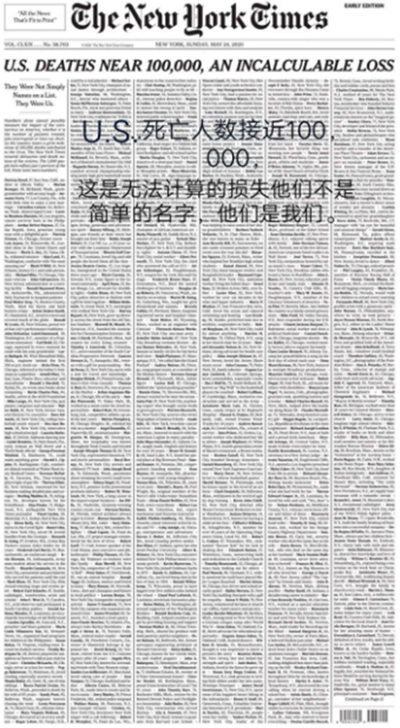
5月24日纽约时报 The NewYork Times of May 24th
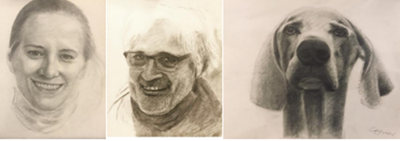
《另一个我》个展肖像作品"The Other I" solo exhibition portrait works
羅一猜测,人对精神的感知和对死亡的恐惧密切相关,越恐惧越容易沦陷于表象世界,而越安全,反而越发亲近更纯粹之精神,这时表象真实反而不那么重要。她说,当突如其来的生死威胁就在眼前时,人可能会依赖对表象肉身的执着来转移驱散内心惊恐;而当威胁减弱或适应恐怖后,才有能力去体验真实自己的真实情绪,并试图表达;又只能在感受到更大的安全后,才再次复苏对生命恒常面对的价值问题的思考,这时候艺术表达开始趋向冷静、抽象、或真正的深刻。
Luo conjectured that peoplechr(39)s perception of the spirit is closely related to the fear of death. The more afraid people are, the more likely they are to fall into the world of appearances. The safer they are, the closer they are to the purer spirit, the reality of appearances is not so important. She said that when the sudden threat of life and death is at hand, people may rely on the attachment to the physical appearance to divert and disperse the inner fear; And when the threat is reduced or people have adapted to the terror, they are able to experience their true emotions and try to express them. Only when they feel more secure can they revive their thinking on the value problems that life always faces. At this time, artistic expression begins to become calm, abstract, or really profound.

《另一个我》展的大幅素描 A large sketch in the"The Other I" exhibition
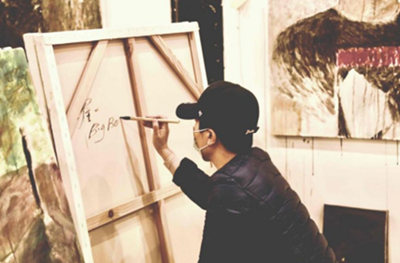
艺术家在布鲁克林DUMBO艺术区工作室 The artist works at her studio in Dumbo, Brooklyn
不是画展的画展
A painting exhibition that is not a painting exhibition
2020年的经历境遇,导致了羅一创作理念、状态和形式的改变。我们可以看到,她来纽约后连续举办的三个个展(其中一个是在线展)都不像以前那样是抽象艺术。然而,羅一强调她的新作品并不是被很多人理解的具象艺术,甚至也不是具象表现主义,她认为画廊展出的铅笔肖像和以无家可归者形象为主题的绘画其实是借壳绘画的观念甚至行为,这些画是一个完整系统中的元素或装置。
The experience in 2020 has led to the change of Loy Luochr(39)s creative concept, state and form. We can see that the three consecutive solo exhibitions she held after coming to New York (one of which is an online exhibition) are not abstract art as she did before. However, Luo stressed that her new works are not just pieces of Figural art that may be understood by many people, it is not even representational expressionism. She says, the pencil portraits and homeless-image-themed paintings, in the exhibition, are outside forms, behind which are some concept or performance art. These paintings are elements of a complete system.
她提醒人们注意她在《另一个我》展览中通过视频装置作品记录的一个疫情街头的行为,以及同时展出的报纸现成品的时效提醒等。她透露《无家可归》展背后是一个持续了半年之久的无家可归的拟真生活状态,与此同时,展览中的细节也反映出一种意图,即把绘画本身装置化,或身体化。
In“The Other I” show, she reminded us to pay attention to the video installation works which recorded a performance on the street in the outbreak as well as the newspaper ready-made works displayed in the show which remind us of the close connection between the works and the temporal context. She disclosed that behind the"Homeless" exhibition was the simulated life situation of her own illegal homelessness that had been going on already for half a year. At the same time, the details, in the exhibition, also reflect the intention that treats the paintings themselves as ready-mades, maybe bodies glimpsed in passing.
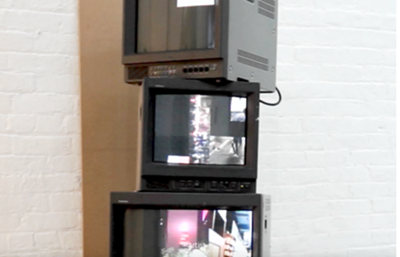
《另一个我》个展的视频装置 Video installation for the solo exhibition“The Other I”
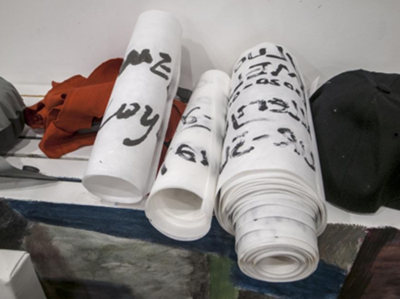
《无家可归》展的书法元素 Calligraphic elements from the"Homeless" exhibition
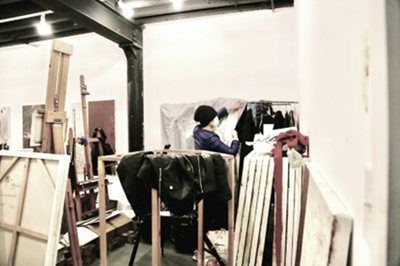
“无家可归”之行为 The performance of being"homeless"
看展姿势:表现主义、大写意、符号学Exhibition postures: expressionism, freehand style, semiotics
羅一说此次展览最大的收获是她与来访的纽约艺术家们的交流。让羅一欣慰的是,她看到参观者们欣赏作品时的专注、严肃和作品间呼应出的和谐调性。除了Dumbo艺术区的艺术家邻居来参加开幕式,Sergey Kir等艺术家朋友说是看到媒体展讯专程赶来,他们分享给羅一那些她并不知情的媒体讯息。陆续前来观展的参观者们热情分享其观展感受:James Howard Collins,Markus.Nikol’a Mironovic认为画面情绪饱满,Vytenis Jankunas、John Ensor Parker说画面构思充满寓意;Mark Crawford, John Mazlish说这些画面让人联想到戈雅、蒙克;Paul Chepolis谈到画面抽象具象元素的衔接巧妙;Michael Ser, Philip Rothenberg欣赏不同材料间的冲突和谐;Queenie Wang问艺术家是否有中国泼墨大写意的背景经历,等等。
Loy Luo said the biggest gain of the exhibition was her communication with visiting artists from New York. To Luochr(39)s delight, she saw the attention, seriousness, which is harmony with the atmosphere of the show. In addition to the artist neighbors from Dumbo Art District who attended the opening ceremony, Sergey Kir and other visitors said that they came to the show because they saw some art media posts, and they shared with Loy Luo some media information that she did not know. Artists also shared their feeling about Loy’s art: James Howard Collins, Markus, Nikolchr(39)a Mironovic thought the paintings full of emotion; Vytenis Jankunas, John Ensor Parker said the images were full of meaning; Mark Crawford, John Mazlish said the images were reminiscent of Goya and Munch; Paul Chepolis talked about the ingenious convergence of abstract and representational elements in the picture; Michael Ser, Philip Rothenberg appreciates the conflict and harmony between different materials; Queenie Wang asked if the artist had a background in Chinese splash-ink brushwork, etc.
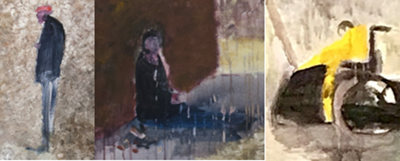
《无家可归》作品局部细节partial details of the works from“Homeless”
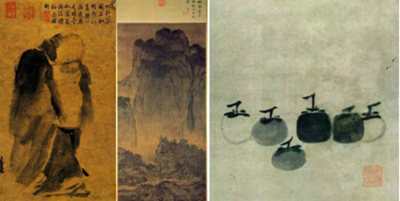
梁楷、范宽、牧溪Liang Kai, Fan Kuan, Mu Xi
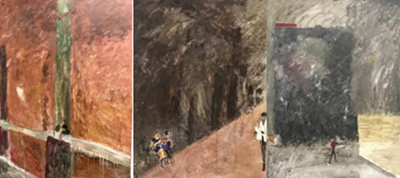
《无家可归》系列作品“Homeless” Series
参观者对展览方式很敏感,觉得把放在地板上的画很吻合“无家可归”的主题;还有画下的木块,用毛笔在地上写下的画名,以及其他不引人注目但随处可见的中国书法元素等,它们被观者识别和提及为具有特殊意义的符号。似乎有意识地使用符号学的解读方法在纽约艺术界很普遍。例如,“红墙”左边的黑色弯曲条被Steve West看作是一根巨大的拐杖,以至于角落里的流浪汉够不到它。又如《青铜睡佛》中的模糊蓝色身影被Scott Endsley解读为一个保护者,尽管这种解读可能与艺术家的原意恰好相悖。
Visitors were sensitive to the style of the exhibition and felt that resting the paintings essentially on the floor was appropriate to the theme of"homeless"; There are also the wooden blocks under the paintings, the names of the paintings written on the ground with a ink brush, and other unobtrusive but ubiquitous Chinese calligraphy elements, which were identified and mentioned by the viewers as symbols with special meanings. It seems that the conscious use of semiotic methods of interpretation is common in New York art circles. For example, the black curving strip on the left of"Red Wall" was seen by Steve West as a crutch so large that the homeless man in the corner could not reach it. Or the fuzzy blue figure in"The Bronze Sleeping Buddha" is read by Scott Endsley as a protector, even though this interpretation may be contrary to the artist’s original intention.

《无家可归》展放置地面的作品 works of”Homeless" on the floor

《无家可归》展书法涂鸦 the calligraphy graffiti in”Homeless" exhibition

《无家可归》展陈细节 the details of works of”Homeless”
羅一说,每当她路过墙壁有涂鸦印记的街角,看到那张摆放地面的展览海报时,就想起阿德里亚娜展览前言里的开篇:一个生命在我们居住的建筑几何图形上留下印记,要多久,要到什么程度,才能给我们留下温暖的躯体的印象?
Whenever she passed the street corner near the gallery with a graffiti on the wall and the poster of the exhibition below it on the ground, Loy was reminded of Adriana’s opening line of the exhibition preface:“How long, and to what degree, must a being imprint itself upon the geometries of our lived architecture before imparting suggestions of a warm body?”.
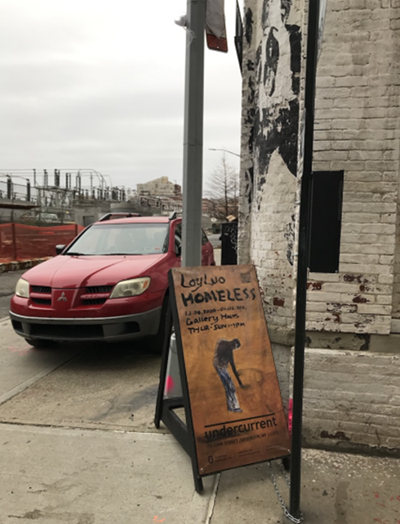
街角海报 The poster on the street corner
她说,在当代艺术的语境中,要捕捉到源于艺术家个人生活经验,同时又与外部世界产生共鸣的能指,需要艺术家对自己诚实,同时对时事敏感。在她看来,“面具”和“无家可归”是当下意义层次丰富的能指。
She says that in the context of contemporary art, to capture the signifier which originated from the individual life experience of the artist but also resonates with the external world requires the artist to be honest with him- or herself and sensitive to the time."Mask" and"homeless" are the signifiers with rich levels of meaning in the current time, in her eyes.
春天有多远
How far is spring
“昔我往矣杨柳依依”,虽说羅一刚去美国的一月还谈不上杨柳依依,总还算天下太平。可到2020年7月签证到期,绵延近五月的疫情却正值高峰,无法回国的羅一只好将签证延期半年,但当她打算在《无家可归》展结束后回国时,新一波的疫情却使她提前3个月订购的航班被取消了。一月的纽约似乎离春天还很遥远,只不过羅一的收获还是令人颇感暖意。
Some lines from The Book of Songs, a collection of classical Chinese poems, say,“When I left there were budding willows by the road; when I returned, rain and snow”. Although in January when Loy Luo left China, it was far from willow to bud, the world was still peaceful. But when her visa expired here in July 2020, the pandemic was at its peak after nearly five months from its start in the U.S., so she could not go back to China and had to extend her visa for six months. And then, although she had planned to return after the Homeless exhibition, she discovered the flight she had booked three months in advance was cancelled because of the renewed pandemic. Spring seems far away in New York in January, but Loychr(39)s harvest is still very warm.
在画廊和艺术家均无期待的情况下,《无家可归》展惊喜地获得了诸如:Artforum, Artcard.cc, Artindumbo, allevent.in, larryqualls.blogspot.com, twocoatsofpaint.com, expoartist.org, inoox.com等美国专业艺术媒体的展讯推送,以及不少艺术自媒体的转发。而中国艺术评论家夏可君和艺术家董鹤、李振中则在苇草智酷段永朝先生的组织下和羅一进行了线上艺术交流活动。
Both Luo and the gallery owners were happily surprised by the art media’s coverage of the“homeless" exhibition opening: Artforum, Artcard. Cc, Artindumbo, allevent. In, larryqualls.blogspot.com, twocoatsofpaint.com, expoartist.org, inoox.com, etc., as well as pushed forward by some social media. Chinese art critic Xia Kejun and artists Dong He and Li Zhenzhong - hosted by Duan Yongchao - had an online art exchange with Loy Luo under the organization of the Chinese NGO CoolReeds.
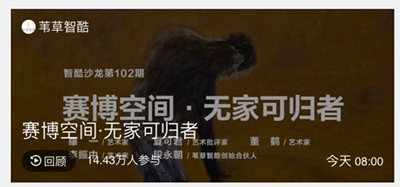
在线艺术沙龙 Online Art Salon
令人鼓舞的是,大约在“无家可归”展开幕的同时,暗流画廊向感兴趣的艺术家发出了申请未来展览的通知,最终收到了近70份申请。值得指出的是,美国的非营利画廊为他们认为优秀的艺术家提供展览——不一定,是众所周知的或受欢迎的——而且画廊的日常导览工作由志愿者担任,人们相信这种非盈利制度可以更好地维护艺术的纯洁。
It is very encouraging to note that Undercurrent had sent out a general notice for interested artists to apply for future shows there around the same time as Homeless opened and ended up receiving almost 70 returns. It could be noted that non-profit galleries in the United States offer exhibitions to artists they believe are excellent - not necessarily because they are well-known or popular - and also that the daily tours of the galleries are conducted by volunteers, which people believe can better maintain the purity of art.
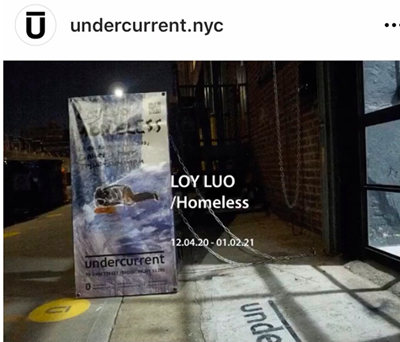
暗流画廊自媒体 Undercurrent Gallery social media
尽管整个纽约城都因疫情处于大萧条中,画廊还是在展览初期就收到艺术赞助人Christopher Pelham先生的热心捐赠,临近展览结束,画廊陆续收到作品收藏意向。撤展当天,纽约上州一位艺术资助人开车到画廊,将羅一的作品及行李接到为其提供的工作室。
Although New York City is certainly suffering under the effects of the pandemic, the gallery received a generous donation from art patron Christopher Pelham at the beginning of the exhibition, and continued to receive requests of pieces from the show for collections up to the end of the exhibition. On the day of the showchr(39)s departure, a patron friend from upstate New York drove to the gallery to help take Ms. Luochr(39)s work and luggage to a new studio temporarily provided for her to embark on the next phase of her creativity.
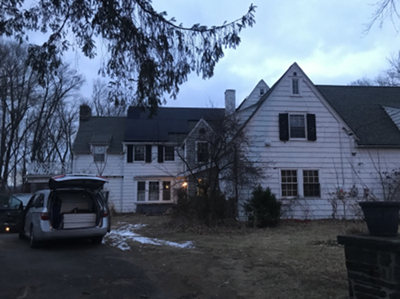
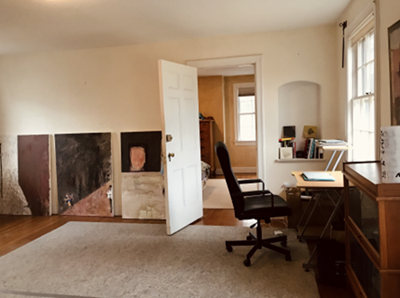
纽约上州工作室 the new studio upstate New York
羅一作品
Loy Luo’s works
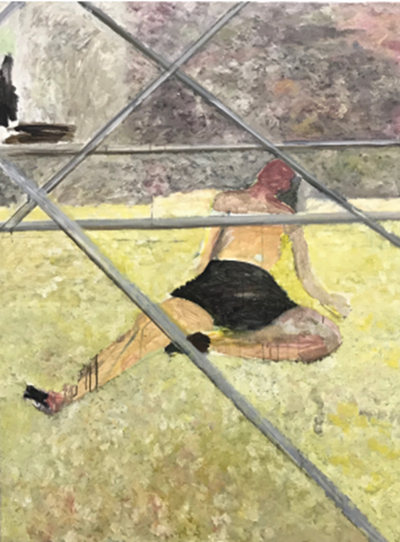
The Son of the God, Mixed-Media, 36” *48”, 2020 《圣子》91*122 cm综合材料 2020年
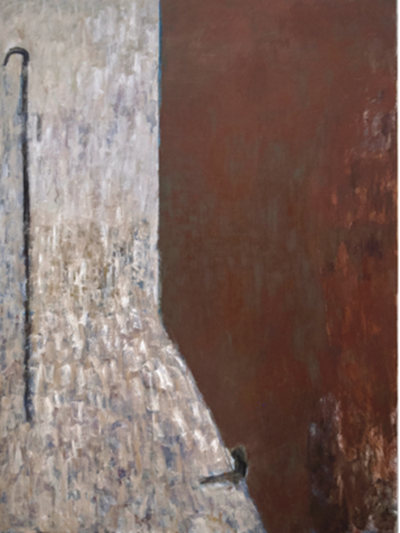
Red Wall, Mixed-Media, 36” *48”, 2020 《红墙》91*122 cm综合材料 2020年
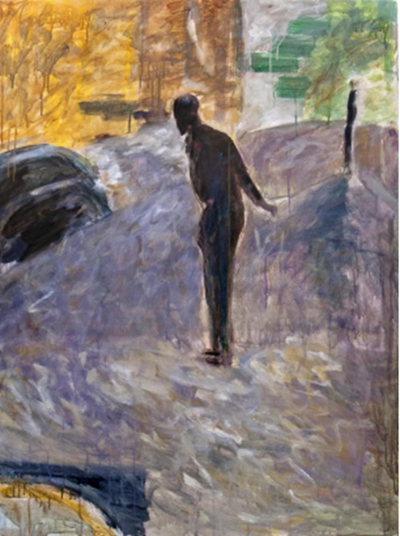
Dumbledore, Mixed-Media, 36” *48”, 2020《邓布利多》91*122 cm综合材料 2020年
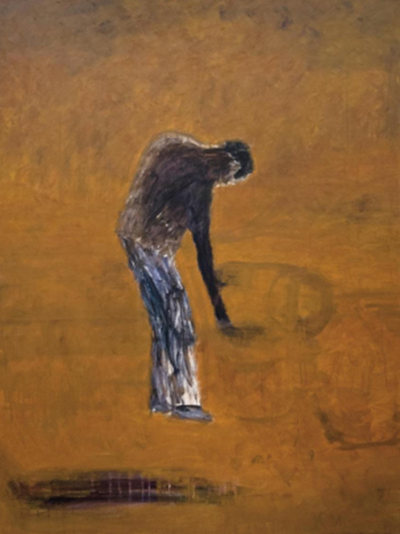
Quasimodo,Mixed-Media, 36” *48”, 2020《卡西莫多》91*122 cm综合材料 2020年
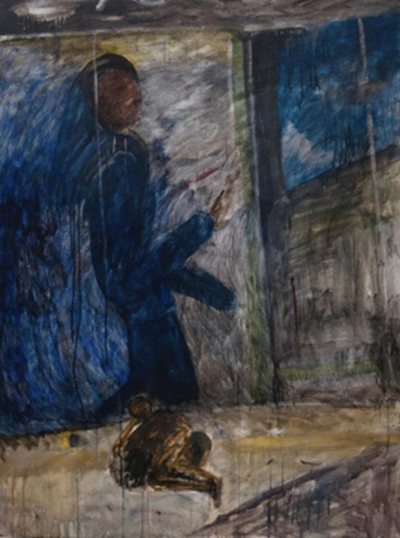
Copper Sleeping Buddha, Mixed-Media, 36” *48”, 2020 《青铜睡佛》91*122 cm综合材料 2020年
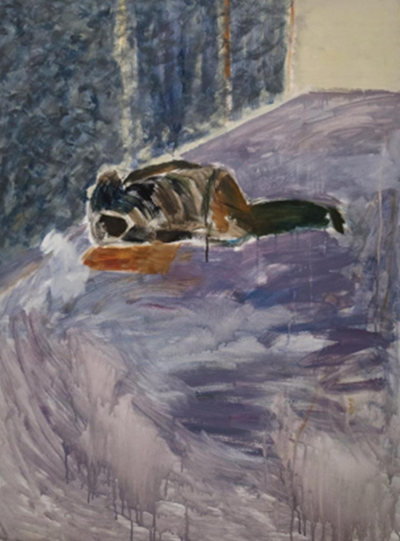
Huge Bed, Mixed-Media, 36” *48”, 2020《大床》91*122 cm综合材料 2020年

The Shaded Area, Mixed-Media, 36” *48”, 2020 《阴影区域》91*122 cm综合材料 2020年
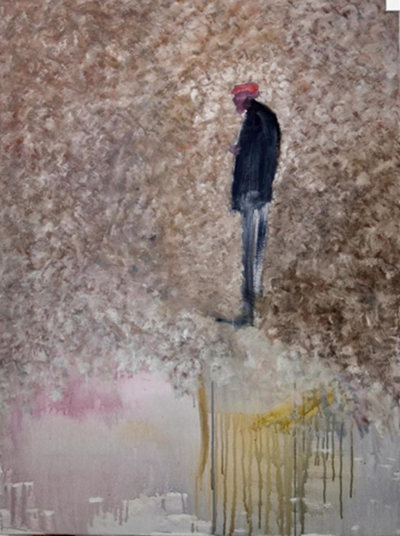
Troubadour, Mixed-Media, 36” *48”, 2020《游吟诗人》91*122 cm综合材料 2020年

Blace Wall, Mixed-Media, 36” *48”, 2020《黑墙》91*122 cm综合材料 2020年
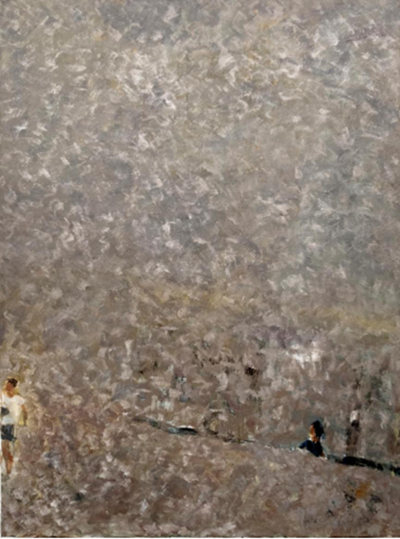
Entanglement, Mixed-Media, 36” *48”, 2020《纠缠》91*122 cm综合材料 2020年
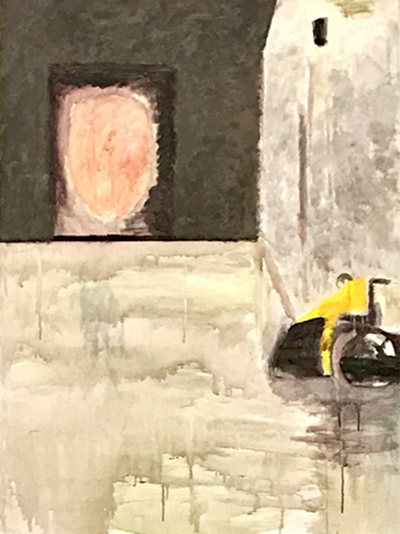
The Subway Hall, Mixed-Media, 36” *48”, 2020《地铁大厅》91*122 cm综合材料 2020年
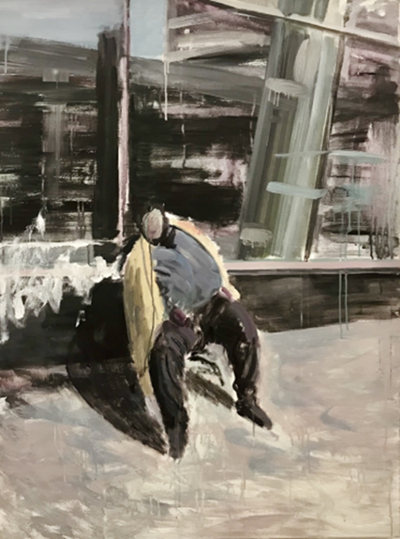
The Boss, Mixed-Media, 36” *48”, 2020《老板》91*122 cm综合材料 2020年

The Black Gate, Mixed-Media, 36” *48”, 2020《黑门》91*122 cm综合材料 2020年
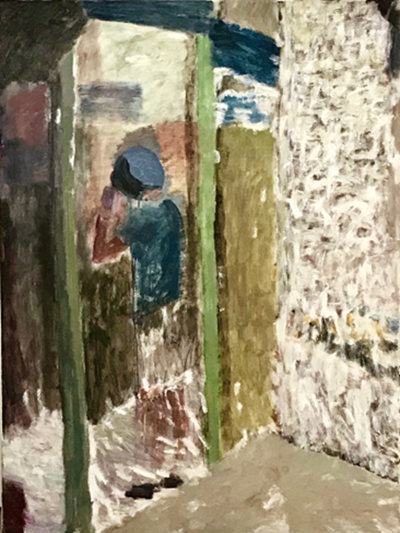
A peek at the Window, Mixed-Media, 36” *48”, 2020《窥视橱窗》91*122 cm综合材料 2020年
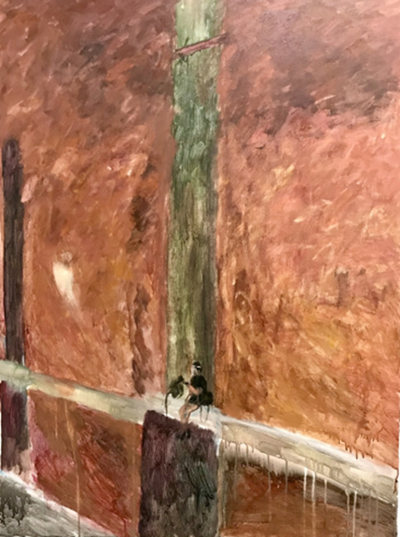
On the Windowsill, Mixed-Media, 36” *48”, 2020《窗台》91*122 cm综合材料 2020年
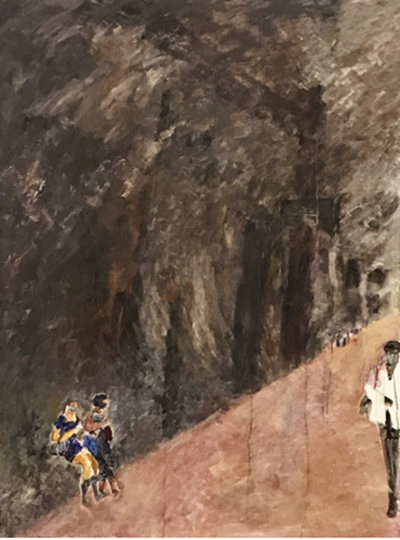
The City Mountain, Mixed-Media, 36” *48”, 2020《城市山》91*122 cm综合材料 2020年
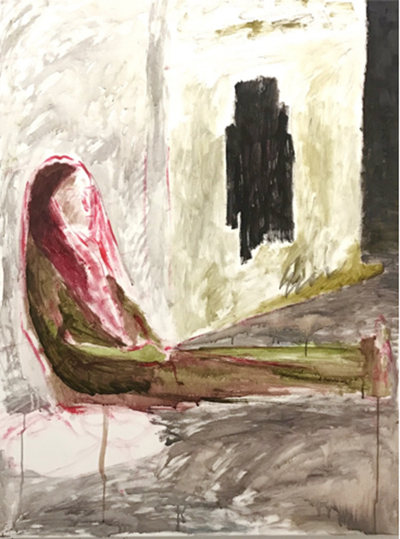
The Scarecrow, Mixed-Media, 36” *48”, 2020《稻草人》91*122 cm综合材料 2020年
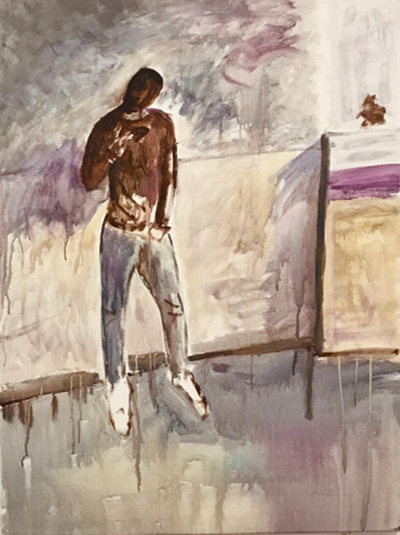
The Fashion Model, Mixed-Media, 36” *48”, 2020《时尚模特》91*122 cm综合材料 2020年
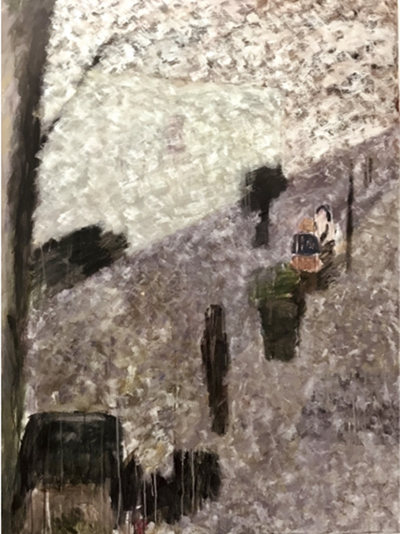
Tea Time, Mixed-Media, 36” *48”, 2020《下午茶》91*122 cm综合材料 2020年
感谢英文编辑:Metanoia,James Howard Collins, Mark Crawford
Thanks for English editor:Metanoia,James Howard Collins, Mark Crawford






